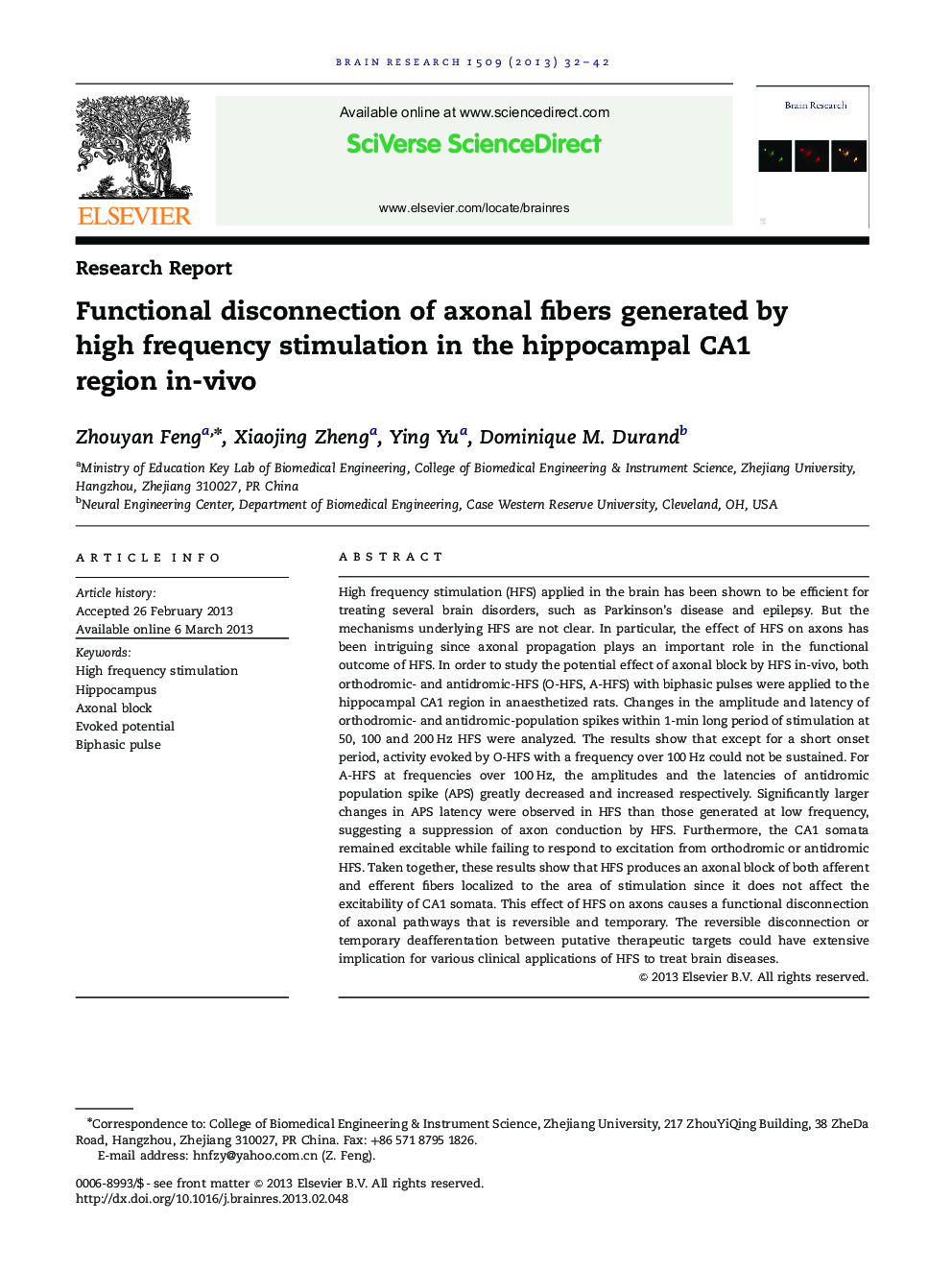| کد مقاله | کد نشریه | سال انتشار | مقاله انگلیسی | نسخه تمام متن |
|---|---|---|---|---|
| 4324710 | 1613930 | 2013 | 11 صفحه PDF | دانلود رایگان |

High frequency stimulation (HFS) applied in the brain has been shown to be efficient for treating several brain disorders, such as Parkinson's disease and epilepsy. But the mechanisms underlying HFS are not clear. In particular, the effect of HFS on axons has been intriguing since axonal propagation plays an important role in the functional outcome of HFS. In order to study the potential effect of axonal block by HFS in-vivo, both orthodromic- and antidromic-HFS (O-HFS, A-HFS) with biphasic pulses were applied to the hippocampal CA1 region in anaesthetized rats. Changes in the amplitude and latency of orthodromic- and antidromic-population spikes within 1-min long period of stimulation at 50, 100 and 200 Hz HFS were analyzed. The results show that except for a short onset period, activity evoked by O-HFS with a frequency over 100 Hz could not be sustained. For A-HFS at frequencies over 100 Hz, the amplitudes and the latencies of antidromic population spike (APS) greatly decreased and increased respectively. Significantly larger changes in APS latency were observed in HFS than those generated at low frequency, suggesting a suppression of axon conduction by HFS. Furthermore, the CA1 somata remained excitable while failing to respond to excitation from orthodromic or antidromic HFS. Taken together, these results show that HFS produces an axonal block of both afferent and efferent fibers localized to the area of stimulation since it does not affect the excitability of CA1 somata. This effect of HFS on axons causes a functional disconnection of axonal pathways that is reversible and temporary. The reversible disconnection or temporary deafferentation between putative therapeutic targets could have extensive implication for various clinical applications of HFS to treat brain diseases.
► Changes of evoked potentials during both orthodromic- and antidromic-HFS were studied.
► The CA1 somata remained excitable while failing to respond HFS of axons.
► HFS produces an axonal block of both afferent and efferent fibers.
► HFS causes a functional disconnection of axonal pathways that is reversible and temporary.
Journal: Brain Research - Volume 1509, 6 May 2013, Pages 32–42